Discover the perfect goat breed for your farm or family with our guide to Different Goat Breeds. Find the ideal fit for your needs today!
Table of Contents
Introduction
Choosing the right goat breed can be a challenge, whether you’re looking to start a farm or add a furry friend to your family. With over 300 different goat breeds available worldwide, there’s a vast array of choices for meat, milk, and companionship.
This blog post will guide you through the diverse world of goats, detailing popular breeds and what makes each one special for your specific needs. Dive in to discover your perfect goat match!
Key Takeaways
- There are over 300 goat breeds around the world for meat, milk, and as pets.
- Boer goats grow fast, don’t get sick often, and handle heat well; Kiko goats need little care and can thrive in harsh conditions.
- Alpine, LaMancha, and Saanen goats produce a lot of milk; Nubian goats have high butterfat milk good for cheese.
- Nigerian Dwarf goats give rich milk despite their small size; Angora goats have valuable fleece for clothing.
- Rare breeds like Arapawa and Damascus are interesting because of their unique looks and abilities to live in tough environments.
Understanding Different Goat Breeds
Goats come in many shapes and sizes. Some are small like the friendly Nigerian Dwarf, perfect as pets. Others grow big and strong, such as Boer goats raised for meat. Each breed has special traits that make them good for different things — milk, meat, or just being a companion.
Colors and patterns vary widely among goat breeds. Alpine goats can produce lots of milk and adapt well to different environments. On the farm, you will see all kinds of ears and faces because each type of goat looks unique.
These differences help farmers pick the right goats for their needs.
Popular Meat Goat Breeds
Some popular meat goat breeds include the Boer, Kiko, Australian Rangeland, and Savanna. Each breed has its unique characteristics that make them well-suited for meat production.

Image Source: Canva
Boer
Boer goats stand out in the meat production world. They come from South Africa and are very strong animals. With their white bodies and distinctive brown heads, Boers are easy to spot.
Farmers love them because they grow fast and have lots of good meat on them. This breed handles hot weather well, making it great for farms in warm places.
Boer goats need less care than other breeds. They get sick less often, which helps farmers save money on vet bills. These goats also adapt well to different food sources and living conditions.
Because they’re friendly and calm, people find them easy to manage. Boer goats truly are a top choice among popular goat breeds for farmers looking for reliable meat production.
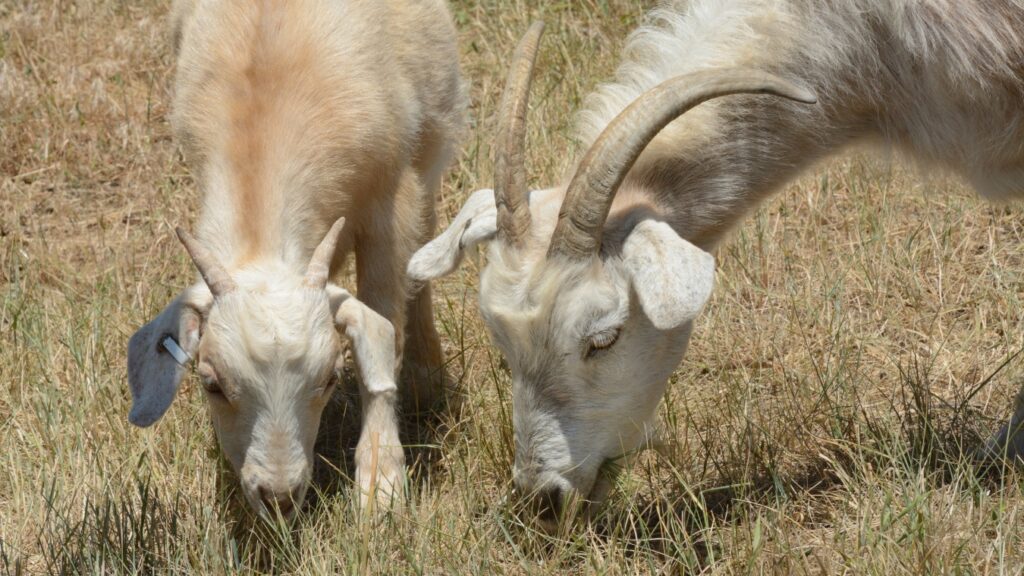
Image Source: Canva
Kiko
Moving on from the Boer, another standout in the meat goat category is the Kiko breed. Originating from New Zealand, this breed is tough and can thrive in harsh conditions. Farmers value Kikos for their survival skills, fast growth, and good meat yield.
These goats are sturdy with a robust frame, making them excellent for rugged terrains.
Kiko goats are known for needing less care than other breeds which makes them popular among farmers who want strong and low-maintenance animals. They also have great mothering abilities and usually give birth to multiple kids at once.
These qualities make Kikos an ideal choice if you’re looking into types of goats that require less hands-on attention while still providing plenty of meat.
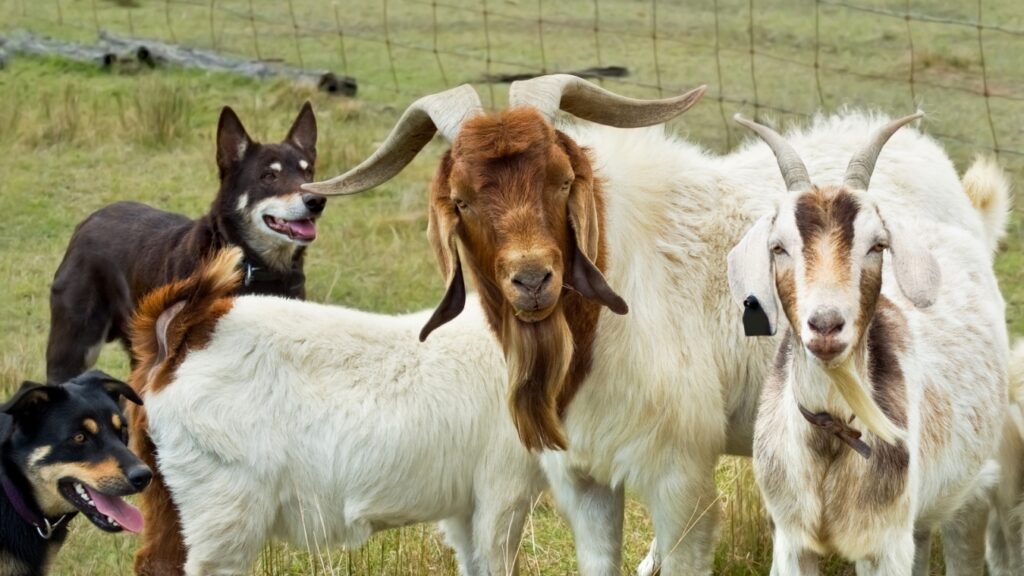
Image Source: Canva
Australian Rangeland
The Australian Rangeland goat breed adapts well to the country’s harsh conditions. They thrive in arid and semi-arid environments, showcasing remarkable resilience to drought and heat stress, making them ideal for sustainable grazing on marginal lands.
Known for their hardiness, these goats are valued for their meat production with good carcass quality, providing a valuable food source in challenging agricultural settings.
They have developed an innate ability to browse and graze across diverse landscapes, contributing positively to weed control and land management. The Australian Rangeland goats also demonstrate strong reproductive capacity and can efficiently convert sparse vegetation into high-quality protein, enhancing the sustainability of livestock operations.
Savanna
Savanna goats are a popular meat breed known for their impressive adaptability and resilience in various climates. These hardy goats have white coats, erect ears, and strong bodies, making them well-suited for the demands of meat production.
They have gained popularity due to their rapid growth rate and high-quality lean meat, making them an excellent choice for those seeking profitable meat goat breeds.
The growing interest in sustainable and ethical farming practices has led to an increased demand for Savanna goats due to their ability to thrive on natural vegetation and minimal care.
Their robust nature, combined with efficient meat production qualities, positions Savanna goats as an ideal choice for farmers looking for low-maintenance yet high-yielding livestock options.
With impressive adaptability and valuable traits, Savanna goats continue to be a sought-after breed among those in the business of raising quality meat-producing animals.
Dairy Goat Breeds
Alpine, LaMancha, and Saanen are popular dairy goat breeds known for their high milk production and gentle temperament. These breeds are often favored by farmers and homesteaders for their excellent milk quality and suitability for cheese-making.
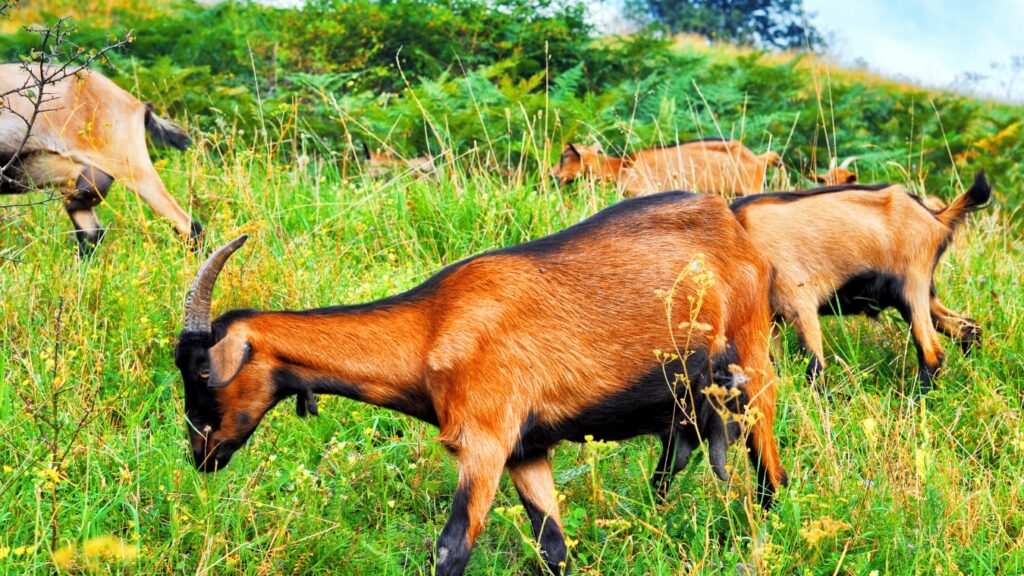
Alpine
The Alpine goat breed is highly valued for its excellent milk production, making it a top choice for dairy farmers and homesteaders. These goats are known for their adaptability to various climates and terrain, thriving in both cold and hot environments.
With their distinctive erect ears and friendly demeanor, Alpines are not only productive but also make great pets on the farm. Their high milk yield makes them one of the best goat breeds for those seeking quality dairy products.
The Alpine’s mild temperament and easy-going nature make them ideal companions for small farms or backyard settings.
Alpine goats are renowned as an excellent source of delicious milk with high butterfat content, meeting the needs of those looking for top-quality dairy products from their livestock.
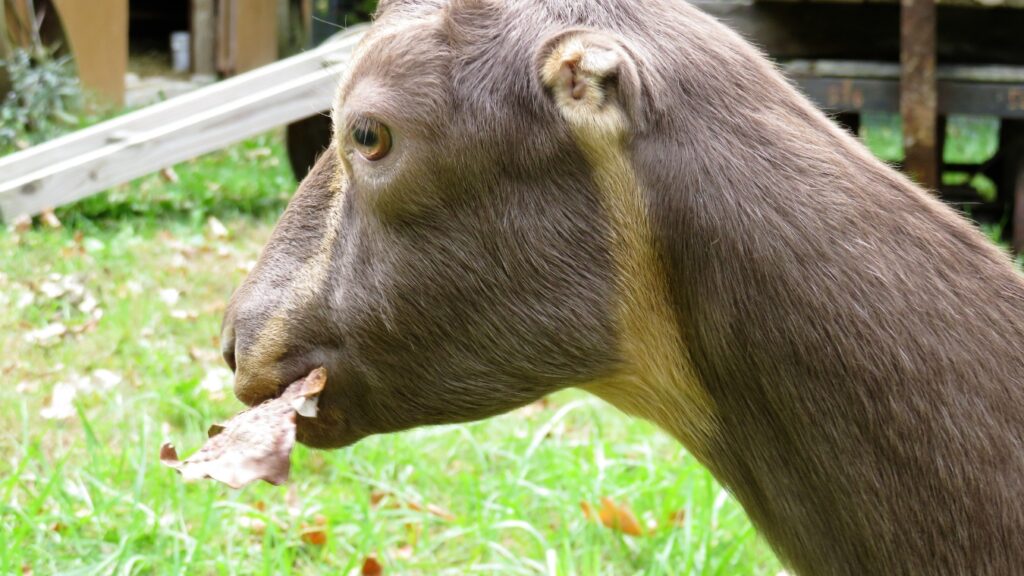
LaMancha
LaMancha goats, known for their distinct ear shape, are a popular dairy breed. Their milk is creamy and high in butterfat, making them excellent for cheese production. LaManchas have a calm and friendly temperament, making them suitable as pets or companion animals on farms.
These goats are adaptable to various climates, which adds to their appeal to small-scale farmers looking for a reliable dairy breed.
With their unique appearance and exceptional milk quality, LaMancha goats have gained recognition as one of the best goat breeds for milk production. Their adaptability and friendly demeanor also make them ideal candidates for those seeking pets with productive benefits on their farm or homestead.
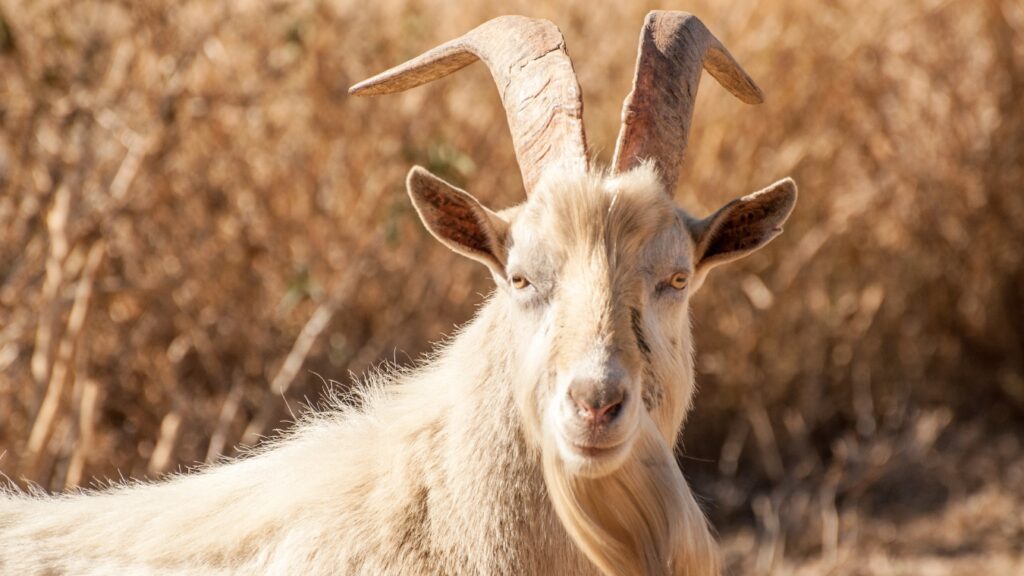
Saanen
Moving from the unique characteristics of the LaMancha breed, we come to the Saanen goats. Known for their excellent milk production, Saanens are popular dairy breeds. They originated in Switzerland and are recognized for their pure white or light cream-colored coats.
With a calm temperament, they prove to be great companions on farms and ideal choices for those seeking high milk yields. Their adaptability to various climates further enhances their desirability as productive livestock.
Saanen goats stand out with their impressive average milk production of about 2,134 pounds per lactation period. This makes them one of the best goat breeds for dairy purposes concerning both quality and quantity.
Other Popular Goat Breeds
Nubian goats are known for their distinctive long, drooping ears and high milk production, making them a popular choice among dairy goat enthusiasts. Nigerian Dwarf goats are small in size but pack a punch when it comes to milk production, making them ideal for smaller farms or homesteads.
Angora goats are famous for their luxurious mohair fleece and are sought after by fiber artisans and spinners.
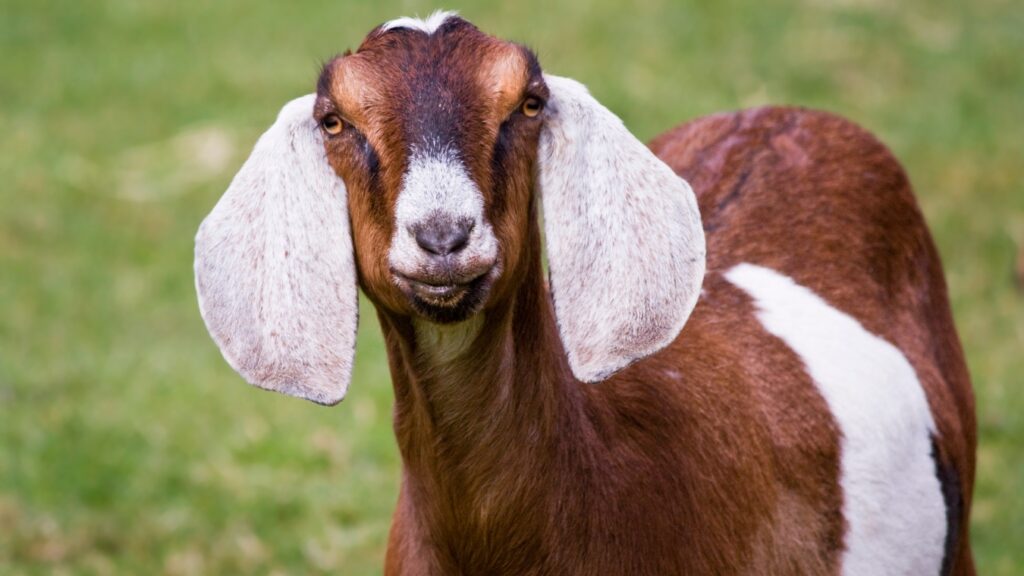
Nubian
Nubian goats are known for their distinctive long, drooping ears and convex profile. They are admired for producing high-quality milk with a butterfat content higher than other dairy breeds, making them excellent for cheese production.
Nubians have a friendly and outgoing personality, and they adapt well to various climates, making them suitable for different farm settings. These goats also make great companions due to their affectionate nature, and their unique appearance adds aesthetic value to any goat herd.
Nubian goats are prized not only for their milk but also as pack animals due to their strength and endurance. Their versatility makes them popular among farmers and homesteaders alike.
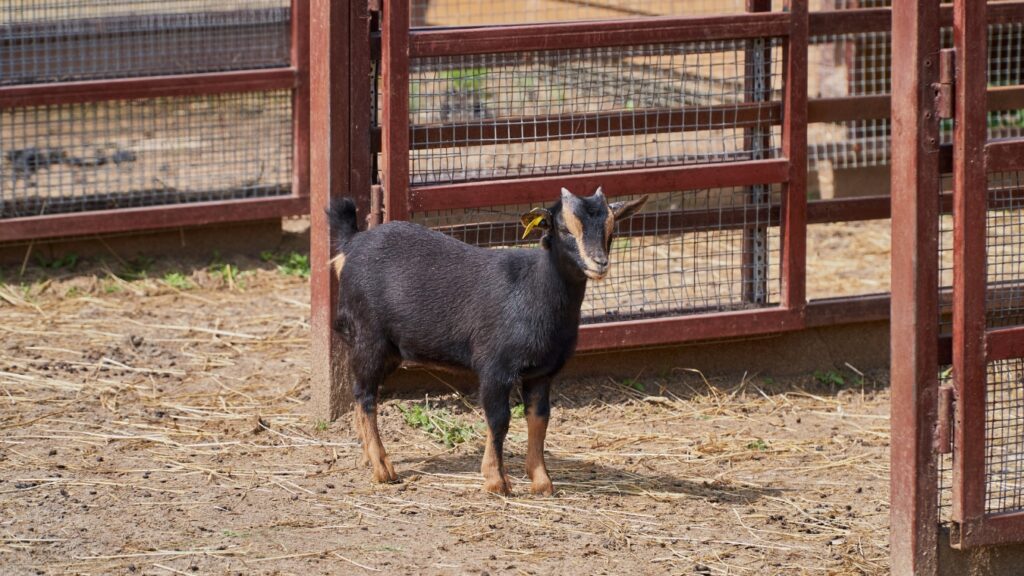
Nigerian Dwarf
Moving from the notable Nubian goat to the charming Nigerian Dwarf, these diminutive goats are beloved for their small size and friendly disposition. Weighing between 60 to 80 pounds, they are considered one of the best goat breeds for pets.
Their milk is also highly prized for its high butterfat content, making them suitable for dairy purposes. With their compact frame and colorful coat patterns, Nigerian Dwarf goats are a delightful addition to any farm or homestead.
These miniature wonders thrive in various climates, further adding to their appeal as an ideal choice for those seeking versatility in a pet or livestock.
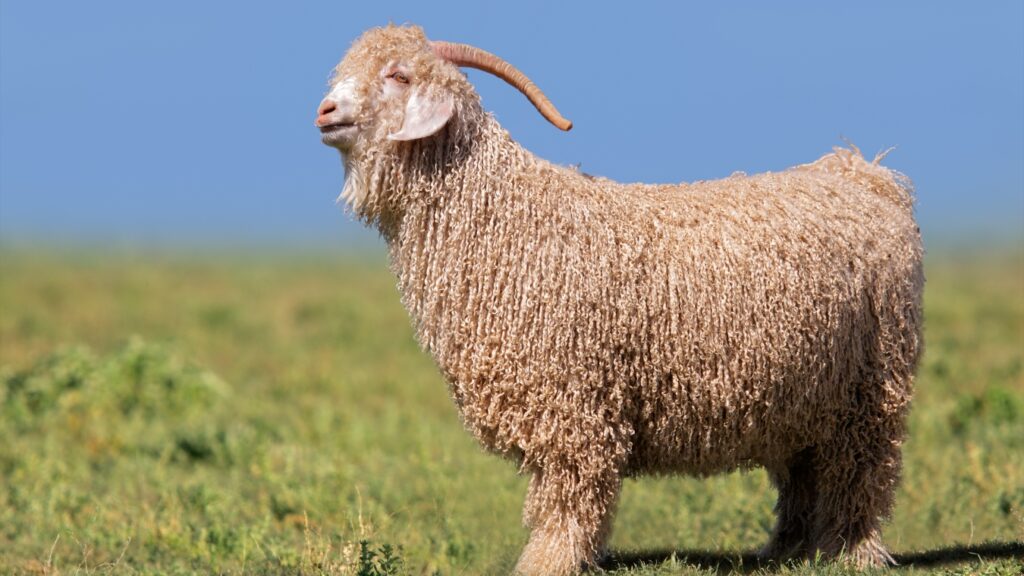
Angora
Nigerian Dwarf goats are popular as pets due to their small size and friendly demeanor. Moving on to Angora, this breed is famous for its lustrous fleece, which is highly prized for its softness and use in luxury clothing items.
Angora goats require special care to maintain the quality of their fleece, including regular grooming and protection from harsh weather conditions. Their fiber also plays a crucial role in the textile industry, particularly in producing high-quality mohair fabric known for its durability and sheen.
Angora goats produce luxurious mohair that is highly sought after in the textile industry. Their maintenance involves regular grooming and protection from extreme weather conditions to preserve the quality of their valuable fleece, making them an essential part of the luxury clothing market.
Rare or Unique Goat Breeds
Some goat breeds are not as well-known but are fascinating in their own right, such as the Arapawa, Madurai, and Damascus goats. Explore these unique breeds to discover the beauty and diversity of the goat world.
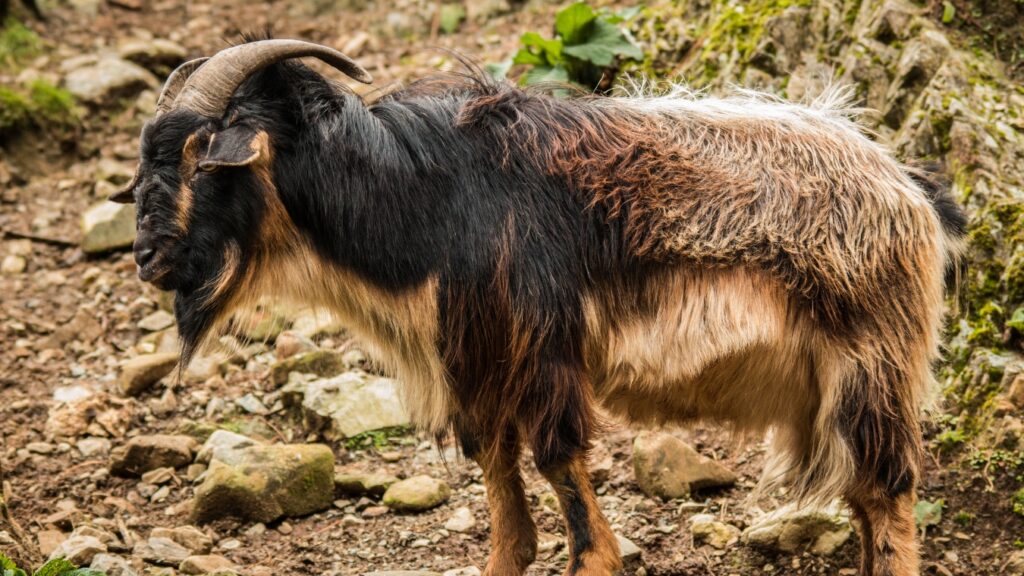
Arapawa
Arapawa goats, also known as “Arapawas,” are a rare breed originally from New Zealand. They are small to medium-sized with distinctive colors ranging from fawn to black, often with unique white markings.
Arapawas are hardy and adaptable, known for their excellent foraging abilities and resistance to diseases. These goats have a wild appearance due to their long, shaggy coats and impressive horns, making them stand out among other breeds.
Historically, the Arapawa goat population was isolated on Arapaoa Island in New Zealand, leading to the development of their distinct traits over time. Today, conservation efforts aim to protect and preserve this unique breed due to its rarity and historical significance.
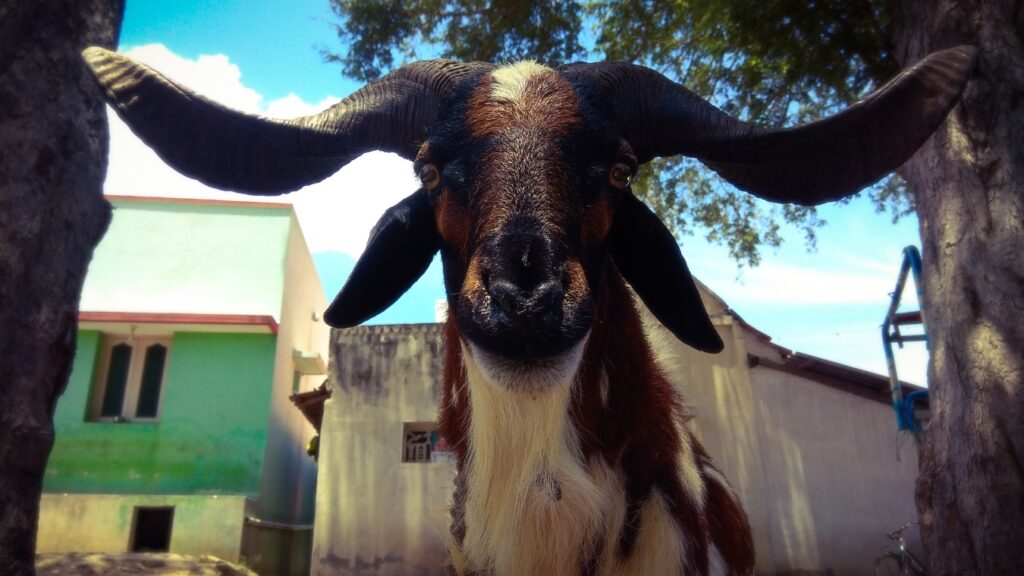
Madurai
Moving on from the unique Arapawa goats, another noteworthy breed is the Madurai goat. With its origins in India, the Madurai goat is known for its adaptability to various climates and terrain.
These goats are a popular choice among farmers due to their hardy nature and high tolerance to heat, making them well-suited for challenging environments. The Madurai goats also have excellent meat quality, which has gained them recognition as a desirable meat breed within the livestock industry.
Additionally, their ability to thrive under semi-arid conditions makes them an economically valuable asset in regions with limited resources.
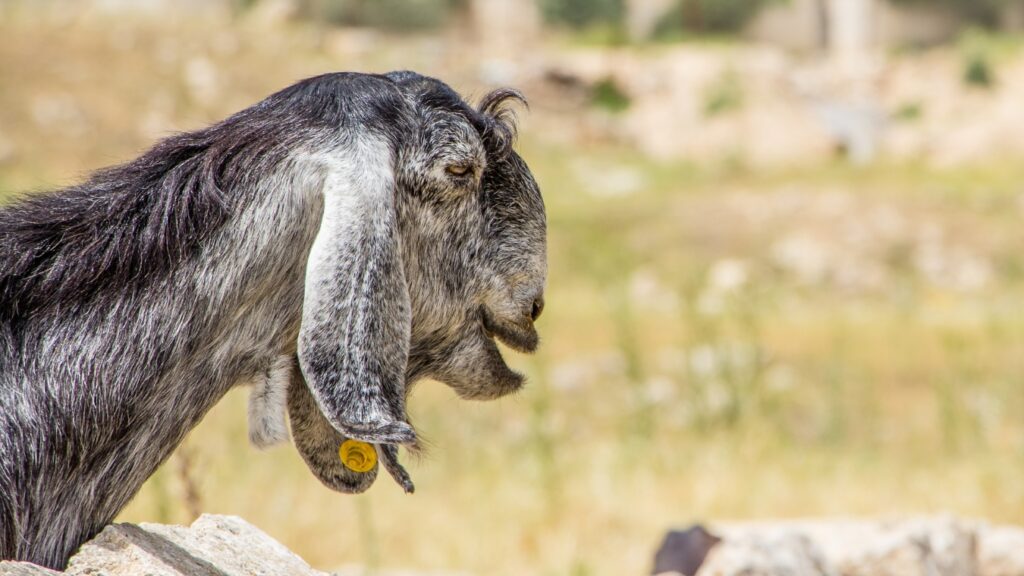
Damascus
Damascus goats are a rare and ancient breed known for their unique appearance and hardiness. Their distinctive feature is their pendulous ears that hang close to the head, making them easily recognizable.
These goats are well-adapted to arid regions, demonstrating resilience in harsh environmental conditions. The unusual goat breed has a remarkable ability to thrive on minimal forage and water, reflecting their exceptional adaptability to challenging landscapes.
The Damascus goat’s characteristic traits make it an intriguing addition to any livestock collection, particularly for those seeking animals suited for harsh climates. Their distinct features and adaptability embody the essence of unusual goat breeds, enriching the diversity within the world of domesticated goats.
Breeds of Livestock
Domestic Goats and Wild Goats make up the diverse collection of breeds within the livestock category. Each breed is unique in its characteristics, making them suitable for different purposes and environments.
Domestic Goats
Domestic goats are an essential part of agriculture worldwide, known for their hardy nature and versatility. They come in various breeds, each with unique traits suited for different purposes such as meat, milk, or fiber production.
These goat breeds are categorized into dairy, meat, and fiber goats based on their primary function within the industry. With over 130 domestic goat breeds globally, they vary widely in size, coloration, and behavior; examples include the Alpine for its exceptional milk production and the Boer renowned as a robust meat breed.
Goats have been domesticated for thousands of years and play a crucial role in providing sustainable resources to communities around the world. Each breed contributes distinct qualities that cater to specific needs such as high-quality milk or lean meat production.
Wild Goats
Transitioning from domestic to wild goats, we encounter a diverse group of hardy and adaptable animals. Wild goat breeds, such as the Markhor and Ibex, inhabit rugged terrains in mountainous regions.
These robust creatures have evolved to thrive in challenging environments with their strong hooves for climbing cliffs and excellent agility.
Wild goat species have remarkable adaptability to extreme climates, showcasing their resilience in hostile landscapes. The distinctive horns of these untamed goats not only serve as protective weaponry but also play a role in asserting dominance within their herds.
Conclusion
In conclusion, exploring the diversity of goat breeds offers a fascinating glimpse into the world of livestock. From robust meat goats like the Boer and Kiko to versatile dairy goats such as Alpine and Saanen, each breed brings its unique traits to the table.
Delving into rare breeds like Arapawa and Damascus sheds light on lesser-known but equally intriguing members of the goat family. Understanding these various goat breeds enhances appreciation for their distinct roles in agriculture and animal husbandry.
Ultimately, this exploration serves as a reminder of the rich tapestry of biodiversity within our domesticated animal populations.
FAQs
What are some common goat breeds?
Some common goat breeds include the Nubian, Boer, Pygmy, and Alpine goats.
Which goat breed is best for milk production?
The Saanen breed is known for being one of the best for milk production.
Are there any miniature goat breeds?
Yes, the Nigerian Dwarf and Pygmy goats are popular miniature breeds.
Can certain goat breeds live in cold weather?
Yes, some goat breeds like the Alpine and LaMancha can adapt well to cold weather conditions.
Is there a difference between meat and dairy goat breeds?
Yes, meat goats such as the Boer are bred for their size while dairy goats like the Nubian produce more milk.